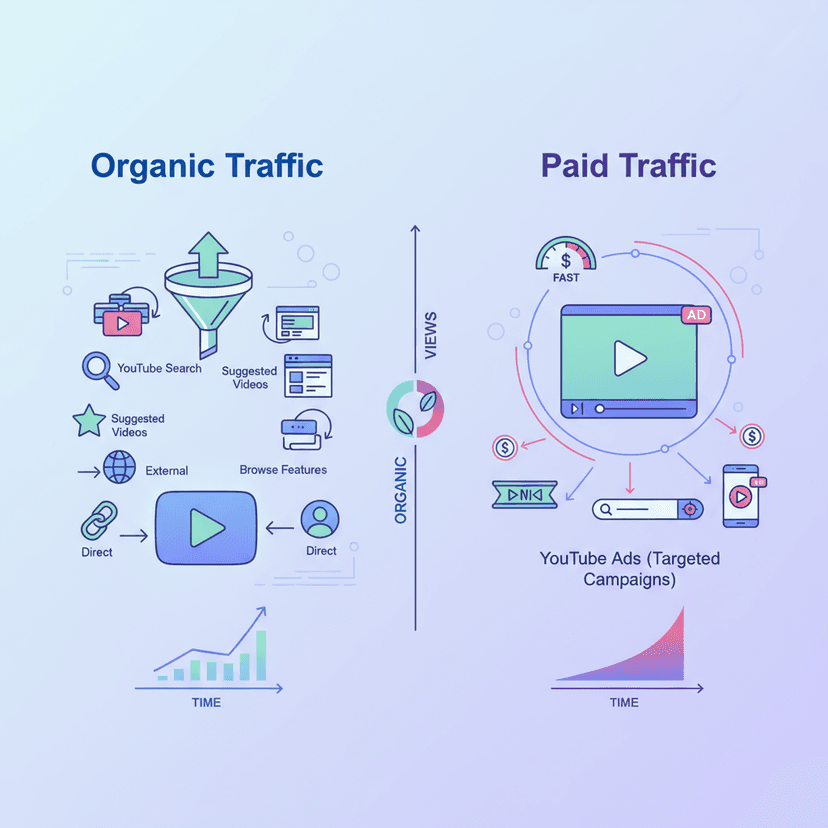In the early days of Digital Marketing, it was undeniable that the workings of various algorithms were quite straightforward. You would simply insert the desired keyword, set a budget, and then track the click-through rate (CTR). But as advertising platforms developed and introduced Ad Tracking features, we could measure actual conversions, allowing us to improve PPC (Pay-Per-Click) advertising to achieve business goals more effectively, whether it’s increasing sales, number of subscriptions, or others.
What is Ad Tracking?
Ad Tracking or Conversion Tracking, simply put, is the process of tracking the results of advertisements through the collection of various data. The objective is to measure and analyze the effectiveness of the advertising campaign, how attractive it is, and whether it meets the target audience. All of this is to take the data and optimize or improve the advertisement even further.
There are various forms of Ad Tracking, for example:
- Impression Tracking – Measures the number of times an advertisement is displayed to users
- Click Tracking – Records the number of clicks the advertisement receives
- Conversion Tracking – Tracks whether users make a purchase or perform a defined goal after clicking on the advertisement, such as adding a product to the cart or placing an order.
- User Behavior Tracking – Analyzes how users interact with the website after clicking on the advertisement
- Cross-device Tracking – Tracks user behavior across different devices, such as smartphones, tablets, and computers
Ad Tracking uses various technologies such as Cookies, Pixels, and APIs to collect data. This data helps marketers measure Return On Investment (ROI) and improve advertising strategies.
What Causes Data Inaccuracy?
Currently, advertising platforms have developed further. Google Ads has introduced Smart Bidding, which translates to “intelligent bidding” in Thai, helping advertisers control bidding to create maximum conversions, maximum customer value, or minimum cost per customer acquisition. However, the effectiveness of advertising can only be good if the data is correct. If incorrect data is entered into the system, the results will not be accurate accordingly.
1. Advertiser Errors
When creating an advertising campaign, there are inevitably errors in entering data, such as:
For example, if a customer uses both Google Pixel and Event on GA4 to track Conversions in Google Ads, it can result in duplicate counting of Conversions and Conversion values, leading to inaccurate data.
2. Limitations of Cookie Tracking
It is believed that tracking data through Cookies is a method that marketers and many businesses have used for a long time. However, Cookies may have limitations in many aspects, including:
- Cookies have limitations in seeing data, making measurement may not cover all channels
- Cookies cannot see the overall Customer Journey across multiple channels
For example, if a customer clicks on an advertisement on Microsoft Ads but does not buy immediately, later the customer receives a promotional email and then makes a purchase. In this case, Microsoft Ads may say that this purchase came from that ad campaign, but in reality, the campaign is only part of it, which Cookies cannot see the decision-making information from the promotional email.
3. Phase-Out of Third-Party Cookies
In recent years, concerns about data privacy, along with regulations such as GDPR and PDPA in Thailand, have led to the phase-out of Third-Party Cookies due to security reasons for users, which affects the Ad Tracking process:
- Google is phasing out tracking with Third-Party Cookies to comply with various privacy laws, which will certainly affect the way advertisements are tracked and measured on Google Ads in the future
Therefore, digital marketers need to try to find new ways to do Ad Tracking to ensure they have continuous and accurate data for marketing.
How to Solve Data Inaccuracy
Now that you know how the Ad Tracking process can have errors, what methods can help prevent or fix them? It must be said that each Ad Tracking tool has different ways to fix inaccurate data. Therefore, marketers should study their tools well and keep up with new updates to be able to adapt to changes in platforms.
Here are some basic recommendations for correcting Data Inaccuracy from Ad Tracking:
1. Regularly Check and Correct Advertising Settings
You should check your advertisements to ensure that tagging and conversion tracking are correct. Look for common errors such as duplicate conversion counts.
2. Use Conversion API
Instead of using third-party cookies, switch to using Conversion API. Because Conversion API sends user data directly from the platform’s server, it is not dependent on the browser, so there is no problem with ad blocking software or cookies, resulting in more accurate data.
3. Use a Single Source of Truth
Choose to use data from one Ad Tracking source instead of using multiple tools at once. For example, choose to use GA4 as the main platform for reporting, which will help reduce the problem of duplicate conversion counts between channels.
Why Accurate Ad Tracking Is Important?
As a digital marketer, doing Ad Tracking is very important because customer data is part of helping us make decisions in various areas, such as:
- Helps Bidding Strategy settings to be effective – such as setting Target ROAS (Return on Ad Spend) correctly and appropriately
- Prevent unnecessary budget spending – Incorrect data may cause us to spend too much budget on advertising campaigns unnecessarily
- Accurate measurement – Of course, accurate data helps understand the effectiveness of the campaign correctly and can improve the campaign effectively
Accurate Ad Tracking is key to improving advertising campaign performance. In an era of increasingly high digital marketing competition, having accurate and reliable data will help you make smart decisions and spend advertising budgets effectively.
Ultimately, Ad Tracking is not just about collecting data, but it is an important tool that will help you understand customers, improve user experience, and create advertisements that appeal to the target audience. Investing in the development of an Ad Tracking system is therefore an investment in the future of the business.
By using new technologies like Conversion API, we can get more accurate data, resulting in smarter decision-making and more effective campaign optimization. Whether you advertise on Google Ads, Meta Ads, or other platforms, prioritizing data quality will give your business a competitive advantage in the world of Digital Marketing.
About Relevant Audience
We are Relevant Audience, a Digital Performance Marketing Agency specializing in SEO and one of the Digital Agency providing comprehensive digital marketing services to support businesses in reaching their target audience at the right time, place, and device (Right Time, Right Place, Right Device).
Our services cover everything from SEO services, Search Marketing, Social Media Ads, Search Ads to Influencer Marketing, and we are also a SEO Company that is a Google Partner. Our team consists of specialists ready to provide consultation and find solutions that meet business needs.
Contact for more information, consult online marketing
Tel: 02-038-5055
Email: info@relevantaudience.com
Website: www.relevantaudience.com






